Flevoland’s best-known wreck: a remarkable case of mistaken identity
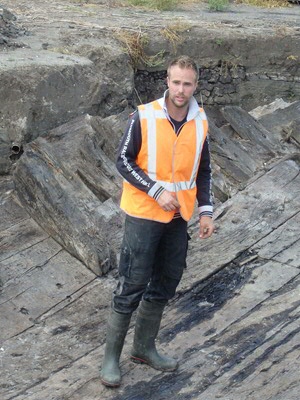
Groningen tjalk barge ‘De Zeehond’ (The Seal) is one of the best-known shipwrecks in the province of Flevoland. In fact, she may well be the best-known wreck in the whole of the Netherlands. She was found in 1967 and salvaged in 1972. Having undergone drying and preservation treatment, she was transported to Lelystad for display. And she has been there ever since, adjacent to the Bataviastad shopping mall. The only thing is… she’s not actually ‘De Zeehond’. Research carried out by maritime archaeologist Yftinus van Popta of the University of Groningen has revealed a remarkable case of mistaken identity.
Of the many shipwrecks found in Flevoland, ‘De Zeehond’ was the first to be formally identified. Around 50 years ago, in the early seventies, the following information about this remarkable vessel was recorded: she was built in 1878, was called ‘De Zeehond’, belonged to Willem Venema and Annegien Koerts from Hoogezand and sank in 1886. These details about the wreck’s identity were based partly on seemingly solid pieces of evidence, namely two name plates recovered from the wreck, one bearing the name ‘De Zeehond’ and the other bearing the names Venema and Koerts. Until recently, nobody has had reason to question the theory’s accuracy.
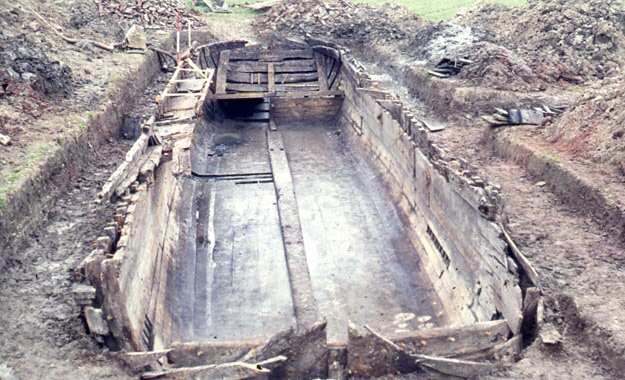
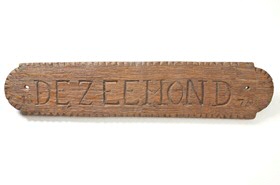
A vessel with a story to tell
In the seventies, several hundred shipwrecks were raised but only in a handful of cases were the crew identified. Most of Flevoland’s shipwrecks date back to the 16th and 17th centuries and generally speaking, researchers were only able to establish what type of vessel it was and in which century it sank. The two name plates recovered from ‘De Zeehond’ were unique keys that helped to unlock the door to further discoveries about the crew. Imagine the researchers’ delight, explains Yftinus van Popta, when they even managed to trace descendants of the Venemas, a seafaring family. It was decided that a family day should be organized, partly in the hope of clearing up some unanswered questions about the name of the vessel, such as why the researchers had been unable to find any record of ‘De Zeehond’ in historic newspapers.
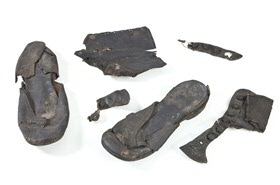
Reconstruction during family reunion
Around 30 descendants of the seafaring couple attended the family day in 1979. They enjoyed admiring the wreck and examining the finds. ‘One of the guests was a daughter of skipper Venema,’ explains Van Popta. ‘The vessel sank before she was born. For the first time, she was able to hold the shoes of her older brothers, whom she had never known. The afternoon was spent going over the family history and retelling the stories that had been passed down through the generations. One such story was that the name ‘De Zeehond’ referred to the way in which the vessel was launched: “it looked like a seal”. Another was that the vessel sank in 1886 in relatively calm waters, which meant that the crew had time to climb into the lifeboat and row to safety.’ The research activities were rounded off and on every website and in every publication, written account and exhibition, the vessel was referred to as ‘De Zeehond’. End of story. Or so it seemed.
Modern techniques
For many years, maritime archaeologist Yftinus van Popta of the University of Groningen has been using modern techniques to study shipwrecks. He was aware of the question marks surrounding the name of the well-known wreck: Willem Venema had indeed owned a Groningen tjalk barge, but it was not thought to have been called ‘De Zeehond’. ‘That made me curious. I thought it would be interesting to re-examine this textbook example of a wreck that had been recovered from the Zuiderzee and identified, but this time using modern research techniques and methods, to see if we could get the story straight. I hoped that it would serve to highlight the potential of these new techniques and methods when it comes to linking shipwrecks to maritime disasters and that it might lead to a new identification of this particular wreck.’
Different name, different year
Van Popta carried on where the researchers in the seventies had left off. And sure enough, he found that the name ‘De Zeehond’ is incorrect. ‘After months of searching, puzzling and investigating, I gathered sufficient evidence to say for certain that this vessel was not called ‘De Zeehond’ and that it did not sink in 1886. In other words, harsh as it may seem for me to say so, the descendants were mistaken. It just shows that you can’t always rely on oral tradition.’
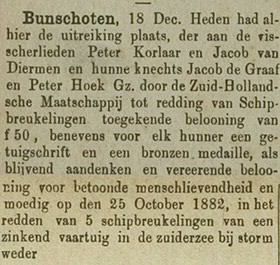
From Zeehond to Fedusie
So, where does the truth lie? The recovered vessel was indeed crewed by the Venema family. But Van Popta has demonstrated that it must be the Groningen tjalk barge ‘Fedusie’ (or ‘Fiducie’) that sank in the Zuiderzee in 1882, during a notorious storm in which tens of vessels in Dutch waters sank and many crew members drowned. A number of newspapers from 1882 mention the disaster that struck the Venema family’s Fedusie. The details tally perfectly with Van Popta’s archaeological and spatial data. ‘The Venemas were incredibly lucky to survive,’ he says. ‘Two fishermen from Bunschoten saw that the vessel was in trouble and came to the rescue in their botter yacht. A month later, they were honoured and rewarded for their bravery.’
Better insight into the history of wrecks
For over 50 years, one of the best known and most visited of Flevoland’s shipwrecks has been the subject of misidentification. It took Van Popta’s archeohistorical and spatial research approach to reveal her true identity. ‘This is a fantastic result,’ Van Popta agrees, ‘achieved by combining the stories that have been handed down with archaeological and historical data. This research project has paved the way for a larger-scale investigation into the link between the shipwrecks recovered from the Zuiderzee and the maritime disasters that occurred there.’ And what will happen to ‘De Zeehond’ now? ‘Perhaps she should be re-baptized,’ Van Popta jokes. ‘I think the least we can do is to put up a new information board with the correct information on it.’
More news
-
13 January 2026
Doing good in complex situations
-
07 January 2026
How music is helping to revive the Gronings dialect
